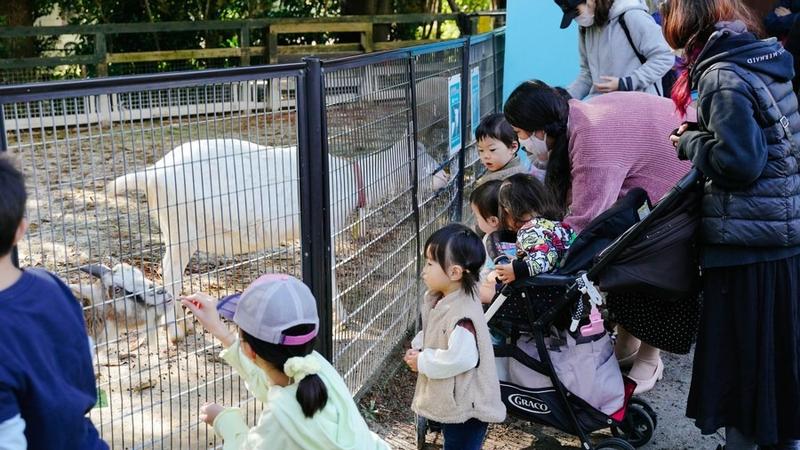 In this file photo dated Nov 23, 2021, people feed animals during Japan's Labor Thanksgiving Day holiday at Chikozen Park in Saitama, Japan. (PHOTO / XINHUA)
In this file photo dated Nov 23, 2021, people feed animals during Japan's Labor Thanksgiving Day holiday at Chikozen Park in Saitama, Japan. (PHOTO / XINHUA)
TOKYO — Japanese companies with over 100 employees will be required to set and disclose targets for the uptake of paternity leave by male employees, according to a new legislation introduced by the government in a bid to alleviate the disproportionate burden of childcare on women and encourage couples to embrace parenthood.
Proposed by the Ministry of Health, Labour and Welfare, an amendment to the Japanese law, "Measures to Support Raising Children of the Next Generation," will be submitted to the current regular session of the National Diet, and will come into effect from April 2025 if passed.
With an increasing number of dual-income households in Japan, there has been a growing trend of men opting for paternity leave, which allows male employees to take time off work upon the birth of a child
Since April 2023, companies with over 1,000 employees are obligated to disclose their actual paternity leave uptake rates and the requirement is expected to cover companies with over 100 employees if the amendment is passed.
READ MORE: For some Japan dads on paternity leave, no housework required
Approximately 50,000 companies will be subject to this regulation. Companies failing to create such plans or disclose them will be advised by the ministry to rectify the situation. Companies with fewer than 100 employees are encouraged to set target values.
The level of these targets will be determined at the discretion of each company. Those with lower targets may be perceived as lacking adequate childcare support systems, making it difficult to attract individuals who prioritize balancing childcare and work, according to local media reports.
With an increasing number of dual-income households in Japan, there has been a growing trend of men opting for paternity leave, which allows male employees to take time off work upon the birth of a child.
The uptake rate of paternity leave stood at 17.1 percent in the fiscal year 2022, significantly lower than the 80.2 percent among women despite a strong increase from 1.9 percent in 2012, data from the ministry showed.
READ MORE: Japanese minister Koizumi's 1st child born, paternity leave looms
In terms of the duration of leave, 51.5 percent of male employees took less than two weeks off in the fiscal year 2021, while 95.3 percent of women who took six months or more.
The labor ministry said it is crucial for companies to undergo a shift in mindset and structural adjustments, citing its 2022 survey which showed that 23 percent of male full-time employees cited demanding work atmosphere and lack of understanding from superiors as barriers to taking paternity leave.
Japan's current dual-income households outnumber households with stay-at-home mothers by more than two-fold. By promoting reforms that enable both parents to actively participate in childcare, the country aims to foster women's career advancement and potentially reverse the declining birthrate, reported the Japanese business daily Nihon Keizai Shimbun.


